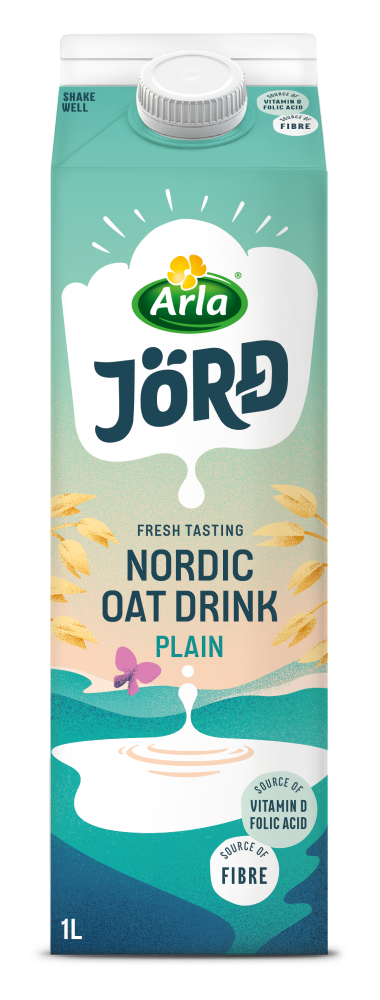A 2023 study1 demonstrated that just 12% of milk alternatives sold in the US had a comparable or greater amount of essential nutrients typically found in dairy milk, such as calcium, vitamin D and protein. Similar research2 assessing the UK plant-based dairy

alternatives market concluded that dairy milk ‘contained more energy, saturated fat, carbohydrates, protein, vitamin B2, vitamin B12 and iodine, and less fibre and free sugars, than plant-based milk alternative’. And a study3 examined plant-based alternatives sold in Singapore and Australia and found that only one third of plant-based alternatives sold in Australia contained a similar calcium content to dairy milk and across the entire sample of more than 900 products, dairy milks were found to be higher in energy, protein, total and saturated fat, total carbohydrates and sugar.
Meanwhile, some healthcare professionals have been raising concerns about the ‘nutritional adequacy’ of alternatives and whether consumers can spot the differences. A US study4 that analyzed the responses of US health professionals found that three fourths believed shoppers were confused about the nutritional differences between dairy and plant-based alternatives, but many also believed that alternatives could be part of a healthy diet.
As for regulation, current Dietary Guidelines for Americans recommends milk and fortified soy beverages as part of a healthy diet due to their nutritional similarity to milk. “When shopping for [plant-based milk alternative] products at the grocery store, it’s a good idea to take a look at the Nutrition Facts label and choose products that are higher in protein, vitamin D, calcium, and potassium and lower in saturated fat and added sugars,” suggests the US Food and Drug Administration.
But what factors influence consumer choice? A 2023 study5 identified nutritional value as one of the top factors that influence purchase intent, along with appearance, taste, and environmental benefits; and another study6 suggested that food fortification and novel processing could play a role in improving the nutritional profile of plant-based alternatives.
Indeed, recent new product releases suggest that manufacturers are increasingly leveraging fortification to bring their alt milks’ nutritional profile up to scratch.
From fiber to folic acid
In the US, Califia Farms recently launched Complete, a plant-based milk that the company claims is nutritionally comparable to dairy since it includes 9 essential nutrients which are also found in dairy milk – protein (8 grams), calcium, vitamin A, D and B12, magnesium, phosphorus, potassium and riboflavin.
Califia Farms’ Suzanne Ginestro said the release ‘signals a shift in the way we think about plant-based milks’, adding that the product not only delivers in terms of sensory experience, but also ‘an undeniably impressive number of vitamins and minerals’. “The launch of Califia Farms Complete means that consumers now have even more yummy, nutritious ways to enjoy a plant-based diet without compromise,” she explained.
Over in the UK, Arla Foods UK is relaunching its Nordic-inspired plant-based milk alternatives brand JÖRĐ under the overarching Arla branding, but it’s not just about marketing – the company has also fortified the range to bring additional health benefits, such as vitamin D, folic acid, and fiber.
“The Arla JÖRĐ product range has been fortified to help consumers eat well. Our new range is fortified with vitamins D and B9, as well as being a source of fibre which comes from maize fiber,” an Arla Foods UK spokesperson told DairyReporter. “But that don’t replace the role of dairy in the diet. Dairy is best at providing dairy nutrition; therefore, we will not try to replace dairy nutrition in our plant-based products, but will focus on nutrients that can fill gaps in the markets.”
Arla claims that JÖRĐ fills a gap in the market by offering this set of nutrients in a single product, which positions it well for future growth according to the company. Arla told us that since the launch of JÖRĐ in 2020, the brand has become the fourth biggest (excluding own label) in the oat category, and has grown (+22%) ahead of the total oat based dairy category (+15.5%), according to Nielsen data comprising the 52 weeks to December 30, 2023.
‘Not milk’ is not a new category per sé
Of course, innovation based on marketing such products as nutritionally close to dairy milk can only go so far, with other brands, including market leader Alpro, having launched products in this space several years ago.
Danone, owner of Alpro, began to offer plant-based alternatives that closely mimic dairy from early 2022 through product ranges such as Not M*lk (Alpro), NextMilk (Silk) and Wondermilk (SO Delicious). While Danone doesn’t reveal the sales performance of separate product ranges, Alpro was among the brands that drove the growth of the Essential Dairy and Plant-based business according to the firm’s 2023 annual results.
Oatly, Alpro’s main competitor, also fortifies its range (besides Organic) with vitamin B2, calcium and vitamin D. And other brands, such as Mighty (formerly Mighty Pea) started to market its Mylkology-branded dairy alternative fortified with calcium, vitamin B12, vitamin D and iodine as far back as late 2021.
But there are still opportunities for manufacturers to innovate, for example to include some of the less commonly-found nutrients in fortified plant-based milks, or include new ‘source of’ claims.
According to associate professor Miriam Clegg, who has carried out research on the state of plant-based milk fortification in the UK, ‘only a small handful’ of alt milks are fortified with iodine. There’s also scope to increase calcium content as well as vitamin B12.
As consumer interest in functional dairy and alt dairy also grows, there’s opportunity to include new ‘source of; claims, such as fiber. Last summer, Nestlé announced an R&D breakthrough that would enable ‘source of fiber’ claims in milk products without fortification, but through the use of an enzyme that converts lactose into dietary fiber, reducing naturally occurring sugars at the same time.
The company already launched its first product to benefit from this enzymatic solution – N3 milk, a powdered milk range that contains prebiotic fiber and low levels of lactose. The target market is broad – from healthy ageing to consumers with lactose sensitivity.
Regardless, brands should ensure they have addressed the three foundational drivers behind consumer purchasing behavior. According to Elena Walden of the Good Food Institute Europe, a think tank that works to promote the adoption of alternative proteins, these factors are taste, price and convenience. (Walden spoke at January’s Food & Bio Cluster conference dedicated to precision fermentation of milk proteins, which DairyReporter attended.)
“That’s not to say that there are no other motivations,” she added. “Clearly, there are environmental considerations, animal welfare and also health. But what the evidence says is that for the vast majority of people, your every-day supermarket shopper, those considerations really only come into the picture once these foundational drivers have been met.
“In other words, we need to give those options that are as delicious, as affordable and as accessible as conventional animal products.”
Sources:
1. Assessing Calcium, Vitamin D, and Protein Content of Plant-Based Milk Alternatives Available in the U.S
Authors: Johnson, A., et al
Published: Current Developments in Nutrition 7:100836
DOI: 10.1016/j.cdnut.2023.100836
2. A comparative assessment of the nutritional composition of dairy and plant-based dairy alternatives available for sale in the UK and the implications for consumers' dietary intakes
Authors: Clegg, E. M, et al
Published: Food Research International, October 2021
DOI: 10.1016/j.foodres.2021.110586
3. Nutrient composition of milk and plant-based milk alternatives: A cross-sectional study of products sold in Australia and Singapore
Authors: Brooker, G. P., et al
Published: Food Research International, November 2023
DOI:10.1016/j.foodres.2023.113475
4. Perspectives from healthcare professionals on the nutritional adequacy of plant-based dairy alternatives: results of a mixed methods inquiry
Authors: Clark, E., B., et al
Published: BMC Nutrition, May 2022
DOI: 10.1186/s40795-022-00542-7
5. Consumers’ Preferences and Attitudes towards Plant-Based Milk
Authors: Wenfan Su, et al
DOI: 10.3390/foods13010002
6. Recent trends in design of healthier plant-based alternatives: nutritional profile, gastrointestinal digestion, and consumer perception
Authors: Lechevalier, V., et al
DOI: 10.1080/10408398.2022.2081666

